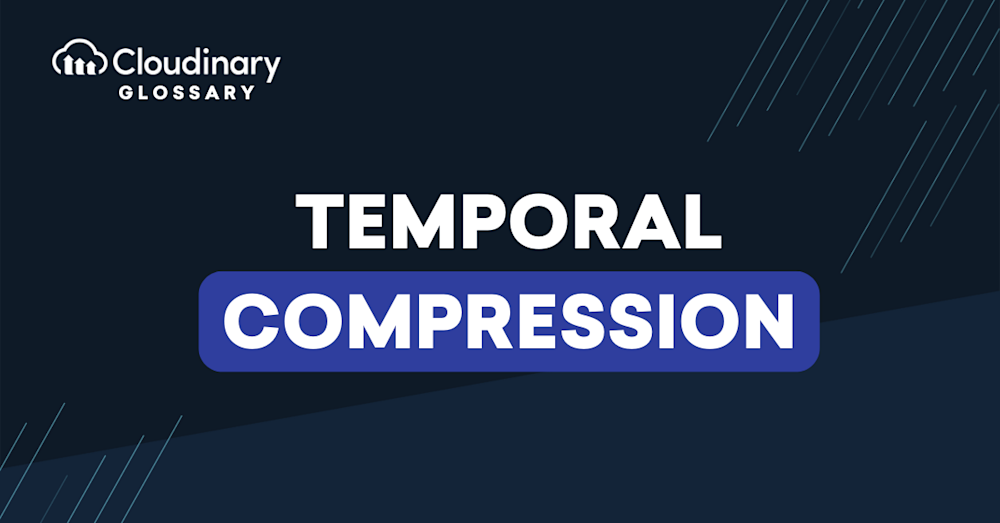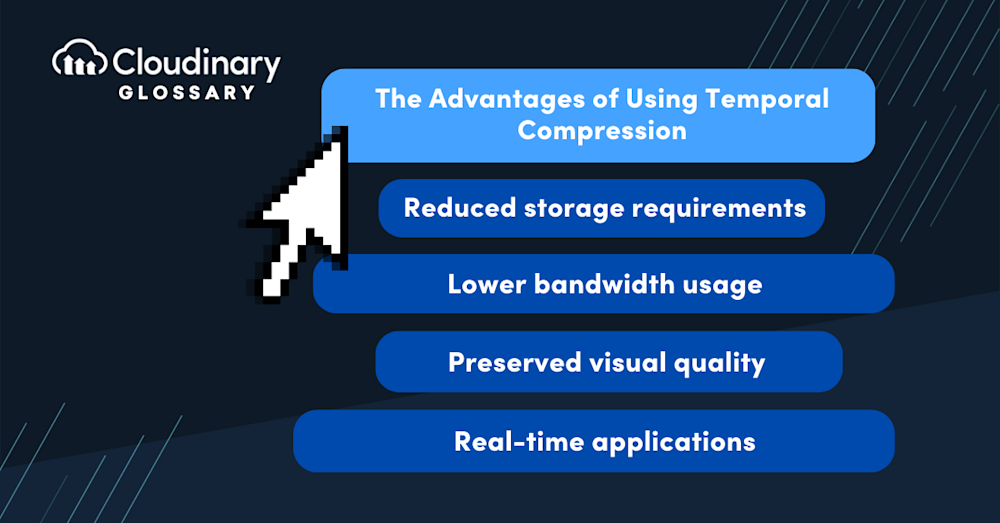What is Temporal Compression?
Temporal compression, also known as interframe compression, is a technique primarily used in video processing to reduce the length of a video while preserving its core content. That means it’s all about condensing time – making videos shorter without losing the story or the information they contain. It does this by removing consecutive, repetitive, or non-essential frames, thereby providing a fast-forwarded version of the original video that maintains the context and coherency of the content.
Where is Temporal Compression Used?
Temporal compression is used in several areas where the efficient storage and transmission of video data are key. Here are a few common examples of where you may find temporal compression:
Video Streaming Platforms
Temporal compression is vital in streaming platforms like YouTube, Netflix, and Twitch. These platforms need to transmit video content quickly and efficiently to users across different devices and network conditions. By leveraging temporal compression algorithms, they can deliver high-quality videos while minimizing bandwidth usage and ensuring smooth streaming experiences.
Video Surveillance Systems
Video surveillance requires continuous recording and storage of video footage, often for extended periods. Temporal compression enables surveillance systems to store vast amounts of video data efficiently. It helps reduce storage costs, allows longer retention periods, and facilitates faster retrieval and analysis of specific events.
Video Conferencing
In the new normal of remote work and virtual meetings, video conferencing platforms rely on temporal compression to transmit real-time video feeds over the Internet. By compressing video data, these platforms ensure smoother video calls with reduced latency and improved overall performance.
Video Compression
Temporal compression is fundamental to video compression standards such as H.264 (AVC) and H.265 (HEVC). These widely adopted standards use temporal compression techniques to achieve high compression ratios without sacrificing visual quality. They have revolutionized video transmission across various industries and platforms.
The Advantages of Using Temporal Compression
Temporal compression offers several significant advantages for storing and transmitting video data:
- Reduced storage requirements. By storing only the changes between frames rather than each individual frame, temporal compression can dramatically reduce the amount of storage space required. This is particularly beneficial when dealing with large volumes of video data, such as video surveillance or video streaming platforms.
- Lower bandwidth usage. Temporal compression minimizes the amount of data that needs to be transmitted, resulting in lower bandwidth requirements. This allows for smoother video streaming experiences, especially in situations with limited bandwidth or high network congestion.
- Preserved visual quality. Despite the compression applied, temporal compression techniques maintain high visual quality by focusing on the changes between frames. This ensures that the essential details and motion in the video are preserved, providing a satisfactory viewing experience for users.
- Real-time applications. Temporal compression is well-suited for real-time applications like video conferencing, where low latency and efficient transmission are critical. By reducing the amount of data to be processed and transmitted, temporal compression enables real-time video communication without significant delays.
The Disadvantages of Temporal Compression
While temporal compression offers powerful benefits, it’s not devoid of drawbacks. Its implications might not always align with your desired output, and understanding these potential drawbacks can help inform your decision-making process around utilizing this technique. Here are a few key points to consider:
- Potential loss of detail. By removing frames to reduce the timeline, some intricate visual data may be lost, impacting the viewer’s understanding of the content.
- Unwanted speed-up effect. When employed excessively, temporal compression may inadvertently lead to a time-lapse or “fast-forward” effect, which isn’t always desirable.
- Increased processor demand. The computation needed to execute temporal compression effectively can put a substantial burden on your system’s resources.
- Potential syncing issues. When syncing the compressed video with the original audio, there might also be challenges, creating a mismatch that could disrupt the viewer’s experience.
Conclusion
Temporal compression revolutionizes video storage and transmission by reducing storage requirements and bandwidth usage while preserving visual quality. Cloudinary’s compression features enable maximum file size reduction without compromising quality. With Cloudinary, you can optimize video delivery, achieve efficient streaming experiences, and unlock the full potential of your video content.
Additional Resources You May Find Useful:




